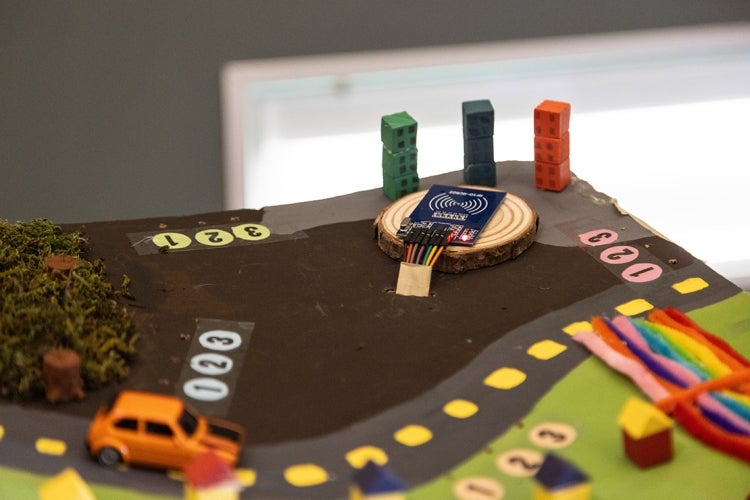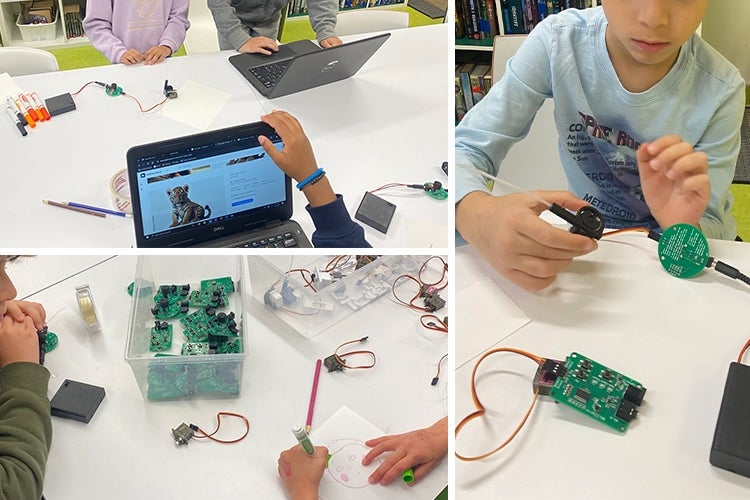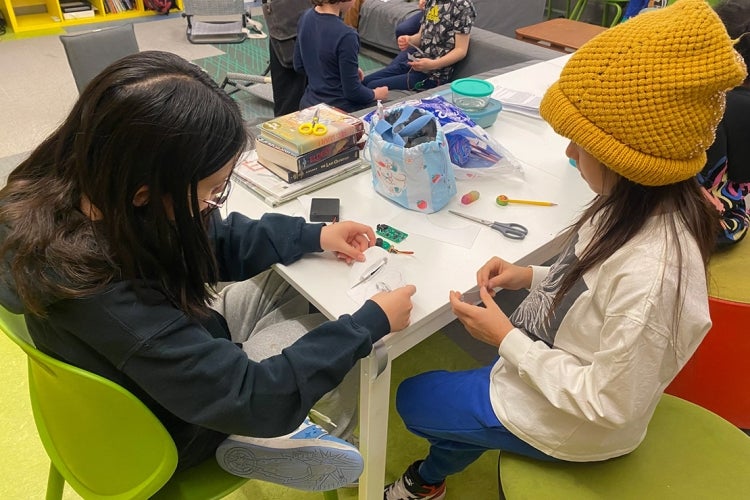Could a talking paper octopus be the key to igniting kids' curiosity about technology?
University of Toronto engineer Paul Dietz certainly thinks so. With the help of a menagerie of mechanically controlled puppets, he has a plan to help students learn to think creatively across a wide range of fields.
All it takes is some simple circuitry, a few arts and crafts supplies - and a lot of imagination.
A distinguished engineer in residence and director of fabrication in the Faculty of Arts and Science's computer science department, Dietz is the whimsical mind behind the Animatronics Workshop. The program collaborates with schools to provide opportunities for children to create, design and build their own robotic shows.
Dietz has been partnering with schools where kids create their own animatronic stories - from staging pre-programmed puppet shows to hosting Q-and-As with Shakespeare - departing from the competition-based competitions typical of many youth robotics efforts.
Dietz's program has been his passion project for a decade and a half, developed on the side while he worked day jobs engineering innovations for companies like Microsoft, Mitsubishi and Disney, as well as his own startups.
Now, at U of T, Dietz is focusing on bringing accessible and affordable animatronics to classrooms across Canada. The goal, he says, is to teach kids to use technology as a tool for storytelling, dismantling what he sees as a false divide between the arts and sciences.
"One of the first participants in this program was a young girl who was really into writing creative stories and really loved science. And she saw these as two conflicting parts of her world," says Dietz, who is also a faculty affiliate at the Schwartz Reisman Institute for Technology and Society.
"After what she did in animatronics, it suddenly dawned on her that you can do both. If you do engineering right, it is a creative art."

Dietz had a similar realization as a teenager in the late 1970s, when a behind-the-scenes tour of Walt Disney Imagineering got him tinkering with an animatronic robot penguin.
This early fusion of technical skills and storytelling sensibilities set Dietz on a path that turned flights of imagination into real-world breakthroughs that shape our engagement with technology.
A prolific inventor and researcher, Dietz is best known for co-creating an early progenitor of the multi-touch display technology that's ubiquitous in today's smartphones and tablets. Other innovations include 'Pal Mickey,' an interactive plush toy that guided visitors through Disney theme parks, and parallel reality displays that allow multiple viewers to see individualized content on the same screen.
Dietz says his storied career debunks the common misconception - often reinforced in schools - that creativity is exclusive to artistic pursuits, while science is the domain of strict rationality, where there are prescribed methods of inquiry to arrive at a single correct answer.
As Dietz sees it, weaving a narrative and programming a robot are propelled by the same creative impulse - they just exercise different skills. He believes a well-rounded education should equip students with a diverse arsenal of tools to explore new ideas.
"If you're an artist, you have to learn the mechanics of sculpting or painting or whatever your medium is," he says. "We should be looking at engineering and technology as those tools, and the key is … learning how to use them creatively to achieve things that are actually positive for our society."
The universal appeal of storytelling also serves to make technology accessible and exciting to kids of all ages and genders, Dietz adds.
Bridging the gender divide in STEM has been core to Dietz's animatronics mission since its inception.
When his daughter was in middle school, Dietz took her to a robotics competition - but she was turned off by the contest, which seemed pointless to her. However, when the two of them worked together on an animatronic raccoon, he saw her passion for creating ignite.
"This light bulb went off in my head: Maybe the problem isn't that we're doing tech," says Dietz. "Maybe kids like my daughter need to see some application that makes sense to them - like telling a story."

Over the years, Dietz has partnered with several schools to set up animatronics workshops that attracted an even number of boys and girls and ensured every kid participated in all aspects of the projects - from storytelling and character design to robot building and programming.
But as his career took him across the U.S., Dietz found it difficult to sustain and replicate the success of the programs because of the prohibitive costs of full-scale animatronic robots and the significant technical expertise required from teachers.
At U of T, Dietz is working to bring animatronics to schools of all resources, allowing students to develop creative and computer science skills by harnessing the endless storytelling possibilities of paper.

At the Dr. Eric Jackman Institute of Child Study (JICS) at U of T's Ontario Institute for Studies in Education, students from kindergarten through Grade 6 have put Dietz's paper animatronics kits to the test, bringing characters to life with kinetic, vocal creations.
The laboratory school has hosted a series of pilot projects where kids fashioned characters out of construction paper, recorded voices and wired motorized movements to animate creations ranging from a chomping, sharp-toothed maw to a bouncing kitten.

Nick Song, a special education and technology teacher at JICS, says he sees enormous educational potential for paper animatronics to engage students in hands-on, interactive learning that simultaneously develops technology skills and fosters creative expression.
"The kids love doing things with technology because it gives them a really cool feedback loop where they can try something and see it work immediately," says Song. "All of this is very motivating for kids, seeing something pick up their voice and start moving, and you almost feel like it's coming to life."
Building on the pilots at JICS, Dietz is aiming to scale up the program to schools across the country in hopes of nurturing the next generation of out-of-the-box innovators.
"It's very different from the technical work that I've generally done … but it feels very right," says Dietz. "I think we're doing something important for Canada."






